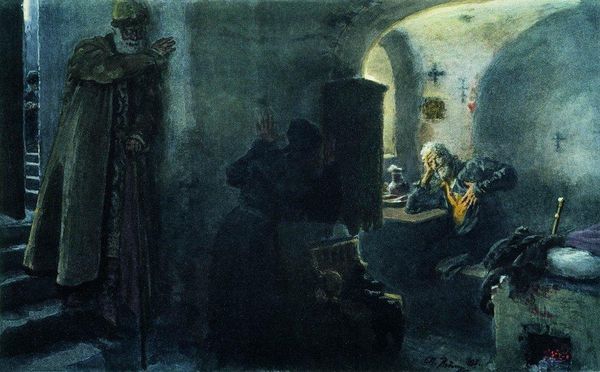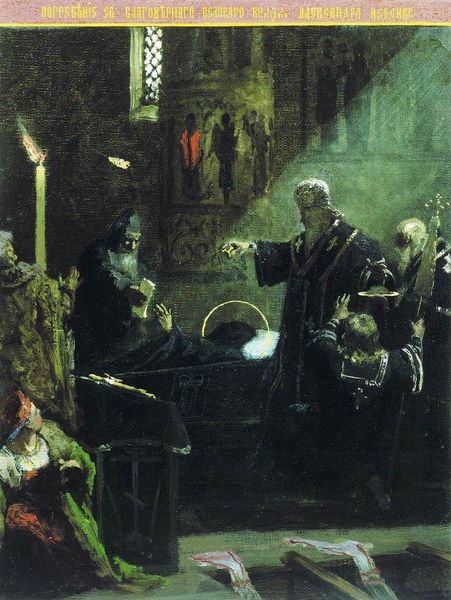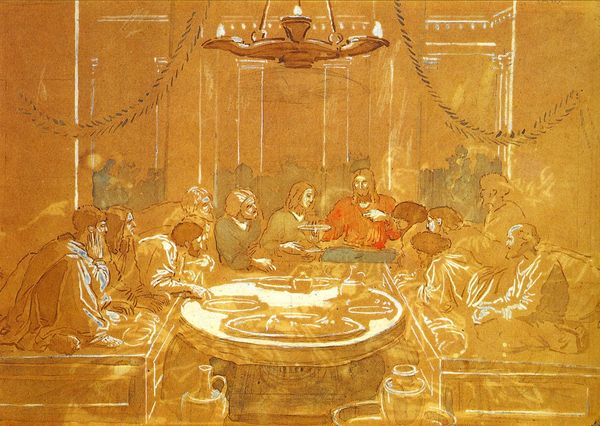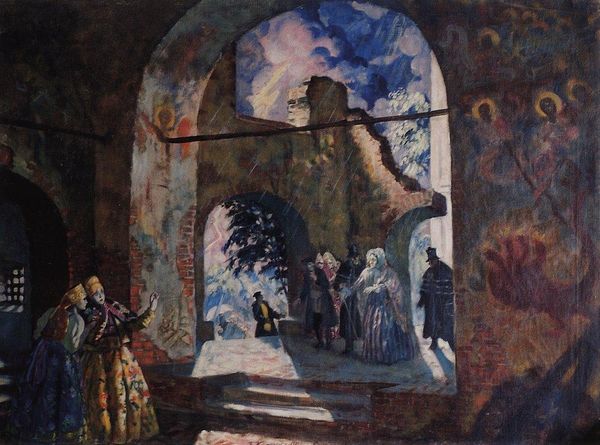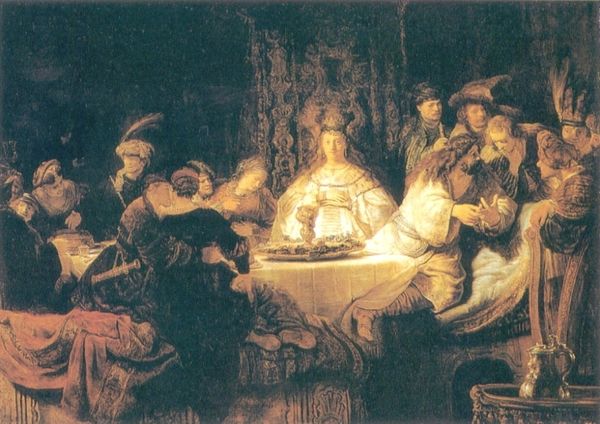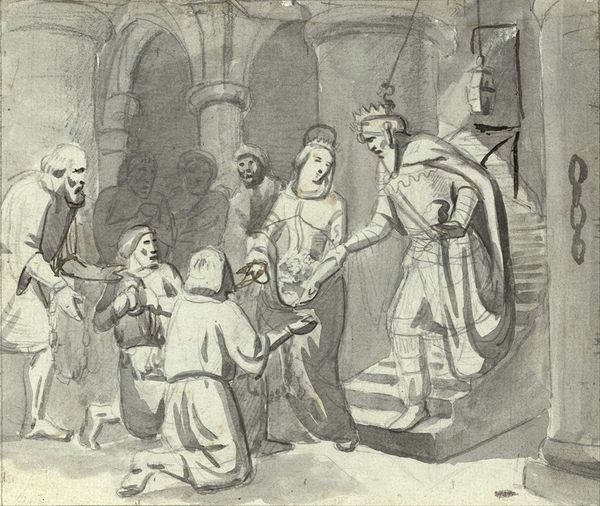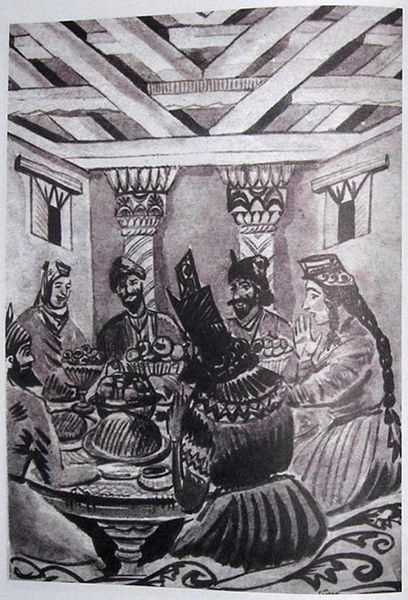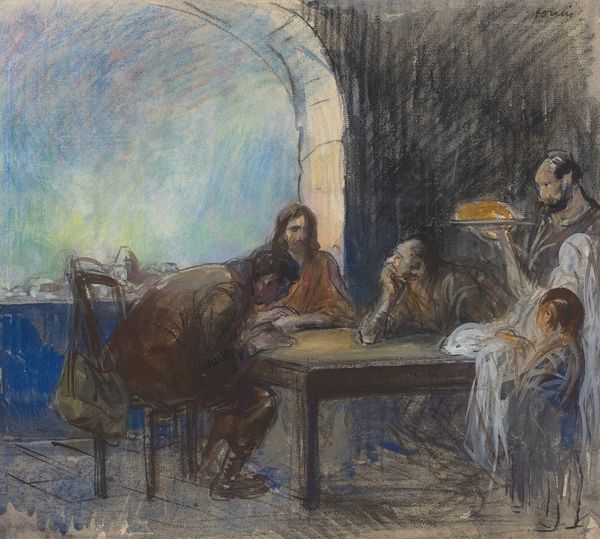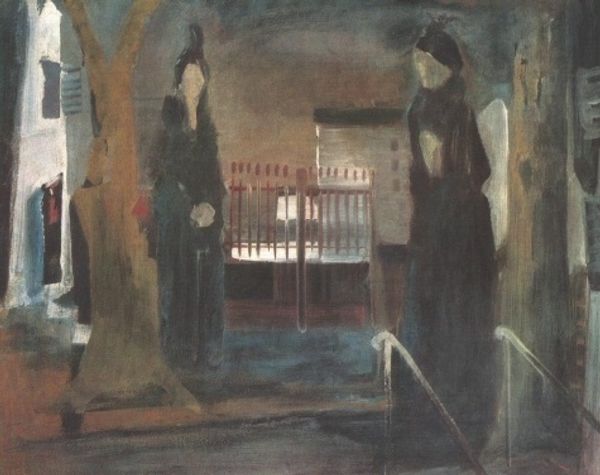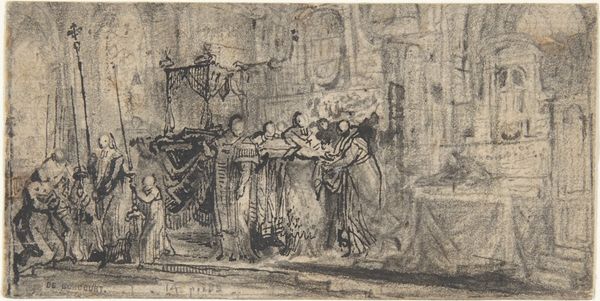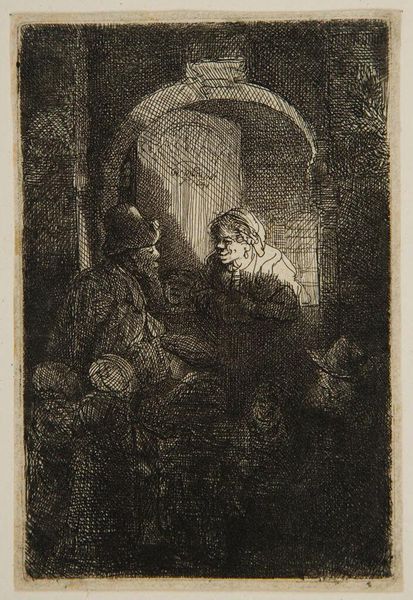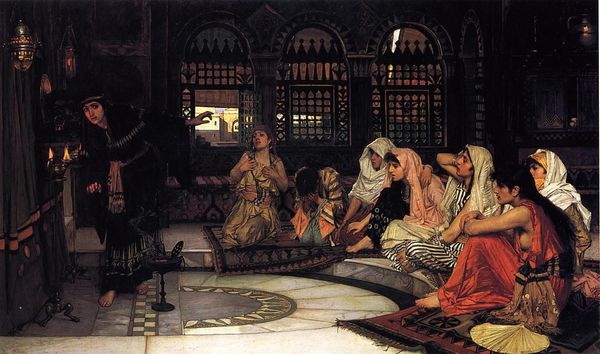
painting, oil-paint
#
portrait
#
painting
#
oil-paint
#
oil painting
#
russian-avant-garde
#
genre-painting
#
portrait art
#
watercolor
Copyright: Public domain
Editor: Here we have Andrei Ryabushkin’s “Boyar Duma,” painted in 1893 using oil paints. The sepia tones give it a somewhat antiquated feel, but it also feels very immediate, like we are witnessing a historical meeting. What do you see in this piece? Curator: This painting offers a glimpse into the power dynamics of old Russia. I see not just a historical record, but a potent statement about the ruling class. Consider the Duma itself: it was an advisory council, but its power waxed and waned depending on the Tsar. Editor: So, what about the way they're positioned? Does that contribute? Curator: Absolutely. Notice the spatial relationships. How are they seated? Who's standing, and what does that signify? The artist carefully positions each figure to represent the complexities within their social structure. Editor: The composition makes me wonder: how might Ryabushkin be commenting on the shifts in power happening in late 19th-century Russia through this historical scene? Curator: Exactly! Ryabushkin created this piece during a time of social unrest. By depicting the Boyar Duma, which lost influence over time, he may be reflecting on the fragility of power and perhaps, even questioning the existing social order. It pushes us to think about how power is performed and negotiated. What does their solemnness say to you? Editor: That's a fascinating point. I didn't consider the context of the painting being made, which makes me appreciate the work so much more! Thank you for helping me to explore its depth. Curator: It's a pleasure to explore art with someone who's thinking critically about power structures. This artwork offers much more to discuss!
Comments
No comments
Be the first to comment and join the conversation on the ultimate creative platform.
